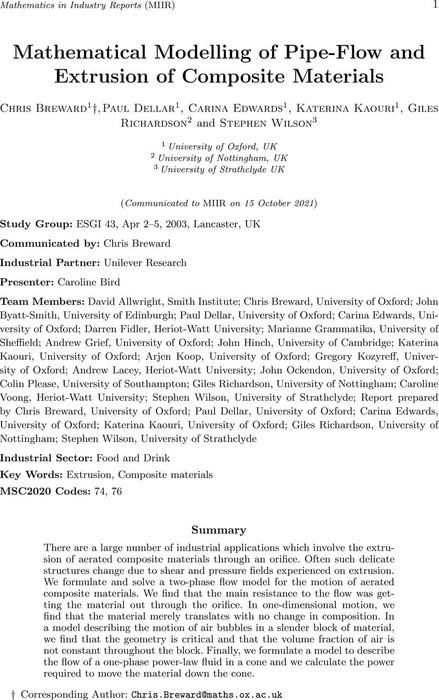Abstract
There are a large number of industrial applications which involve the extrusion of aerated composite materials through an orifice. Often such delicate structures change due to shear and pressure fields experienced on extrusion. We formulate and solve a two-phase flow model for the motion of aerated composite materials. We find that the main resistance to the flow was getting the material out through the orifice. In one-dimensional motion, we find that the material merely translates with no change in composition. In a model describing the motion of air bubbles in a slender block of material, we find that the geometry is critical and that the volume fraction of air is not constant throughout the block. Finally, we formulate a model to describe the flow of a one-phase power-law fluid in a cone and we calculate the power required to move the material down the cone.
Content






